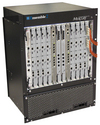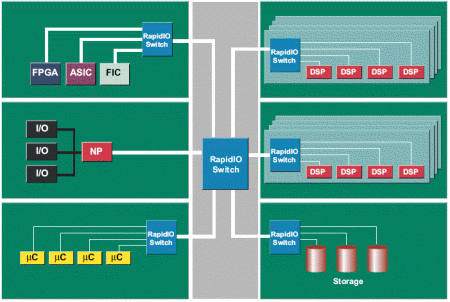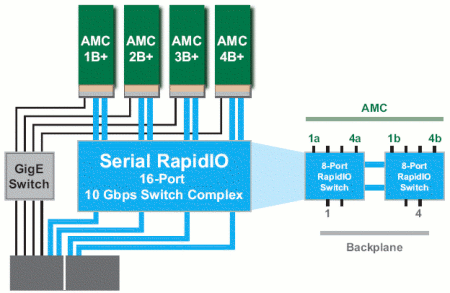ATCA platform runs CGL, open source management suite
Jun 5, 2006 — by LinuxDevices Staff — from the LinuxDevices Archive — 8 views Wind River says its commercial Linux distribution was chosen by Mercury Computer Systems for an ATCA-compliant system for telecom application development, evaluation, and deployment. The Ensemble2 system runs Wind River's Platform for Network Equipment, Linux Edition (PNE-LE), and features RapidIO hardware,… APIs, and utilities.
Wind River says its commercial Linux distribution was chosen by Mercury Computer Systems for an ATCA-compliant system for telecom application development, evaluation, and deployment. The Ensemble2 system runs Wind River's Platform for Network Equipment, Linux Edition (PNE-LE), and features RapidIO hardware,… APIs, and utilities.
(Click for larger view of Mercury Ensemble2)
Additionally, the Ensemble2 system is capable of running OpenClovis ASP, a massive management suite for distributed application servers that was released last month under the GPL. OpenClovis ASP features an object-oriented, hierarchical IPC (interprocess communications) architecture said to be highly scalable and efficient, and to support operation on DSPs (digital signal processors).
The Ensemble2 is a large chassis based on the AdvancedTCA standard. It is designed to support hot-swappable AMC (advanced mezzanine card) modules, and is available in 14- and 16-slot configurations. Touted features include hardware support for “the latest” serial RapidIO, as well as support for gigabit and 10-gigabit Ethernet.

Ensemble2 system architecture
(Click to enlarge)
Wind River says its PNE-LE product is based on a Carrier Grade Linux distribution, and integrates with “many of the industry's most popular telecommunications boards.” PNE-LE supports PICMG's 3.x ATCA specification along with various high-availability functions, and includes TIPC, a standards-based interprocess communication mechanism that can be used to connect Linux to other OSes in heterogeneous environments.
Interestingly, Mercury's product literature for the Ensemble2 notes that the system can support a “heterogeneous or a homogeneous OS environment, such as Linux and OSE, among others.” Enea's OSE RTOS and recently open-sourced Linx IPC (interprocess communications) mechanism also support Linux in heterogeneous environments, suggesting that Ensemble2 customers interested in combining Linux with another OS in distributed applications will now be able to choose among at least three IPC mechanisms — TIPC, Linx, and OpenClovis's IOC.
Mark Skalabrin, GM of Mercury's advanced solutions business, stated, “Mercury and Wind River share a commitment to Linux and to open standards. When evaluating Linux-based alternatives, we found that adopting [PNE-LE] would allow us to focus our development resources on our own unique areas of value.”
Glenn Seiler, product line manager of Platforms at Wind River, stated, “Device manufacturers are building increasingly connected, complex devices, and products are now being differentiated through device software innovation.”
Availability
The Ensemble2 is currently shipping, at prices that start at $15K.
This article was originally published on LinuxDevices.com and has been donated to the open source community by QuinStreet Inc. Please visit LinuxToday.com for up-to-date news and articles about Linux and open source.
